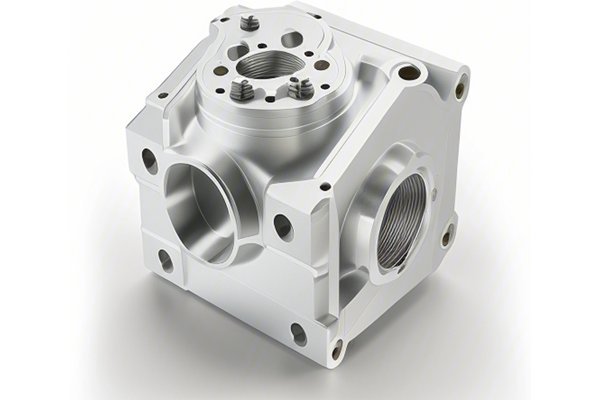Opening
Did you know that the aerospace industry is one of the most demanding sectors when it comes to material selection? In fact, it’s estimated that lightweight materials can improve fuel efficiency by as much as 20% in aircraft design. As aviation technology advances, manufacturers are continuously seeking innovative solutions to reduce weight without compromising safety or performance. The solution lies in the adoption of lightweight materials combined with advanced manufacturing technologies like CNC machining. Join us as we delve into the specifics of lightweight materials used in aerospace CNC machining and the benefits they offer.
Understanding Lightweight Materials in Aerospace
Lightweight materials are essential in the aerospace industry due to their ability to reduce the overall weight of aircraft. The relationship between weight and fuel efficiency is crucial; lighter materials lead to savings in fuel costs and lower carbon emissions. But what materials are considered lightweight in aerospace, and how does CNC machining enhance their application?
1.1 Aluminum Alloys
Aluminum alloys, particularly series 2000 (copper) and 7000 (zinc), are frequently used in aerospace applications. They provide a great strength-to-weight ratio and are highly corrosion-resistant. Newer alloys like Al-Li (aluminum-lithium alloys) have further reduced weight while improving strength.
1.2 Titanium Alloys
Titanium is highly regarded for its excellent strength-to-weight ratio, corrosion resistance, and ability to withstand extreme temperatures. It is often used in critical components, such as aircraft frames and engine parts. The challenge with titanium lies in its difficult machinability, which is where CNC machining shines through advanced tooling and techniques.
1.3 Composites
Composite materials, such as carbon fiber reinforced polymer (CFRP) and glass fiber reinforced polymer (GFRP), offer unique advantages. They are lightweight yet immensely strong and rigid. Composites can reduce weight by up to 50% compared to traditional metals. The CNC machining of composite materials, however, requires specialized tools and machines to prevent delamination and surface damage.
1.4 Magnesium Alloys
Magnesium is recognized as one of the lightest structural metals available, making it ideal for aerospace components. Magnesium alloys are increasingly used in applications where weight reduction is critical. CNC machining processes are employed to ensure precision and to achieve complex geometries.
CNC (Computer Numerical Control) machining has revolutionized the manufacturing processes used for lightweight aerospace materials. Here’s how CNC technology maximizes the advantages of lightweight materials:
2.1 Precision Engineering
CNC machining offers unparalleled precision, allowing manufacturers to create intricate designs and tight tolerances necessary in aerospace applications. This is crucial when working with lightweight materials, which can often be more challenging to machine than traditional metals.
2.2 Complex Geometries
Aerospace components frequently require complex geometrical features to achieve aerodynamic efficiencies. CNC machines, equipped with CAD/CAM software, allow for complex curves and contours to be manufactured efficiently, ensuring that performance is not compromised.
2.3 Reduced Waste
The efficiency of CNC machining leads to reduced material waste. The ability to optimize cutting paths and operations minimizes excess scrap, making it not only more economical but also more environmentally friendly—a win-win for the aerospace industry.
2.4 Enhanced Surface Finish
Lightweight materials often require high-quality surface finishes to enhance performance and reduce stress concentrations. CNC machining techniques can achieve superior surface qualities that are essential for both aesthetic and functional applications in aerospace.

While lightweight materials present numerous benefits, several challenges also arise:
3.1 Machinability Issues
Different lightweight materials have varying levels of machinability. For instance, titanium’s tough, ductile nature can cause tool wear and difficulty in achieving desired tolerances. The challenge is countered using advanced cutting tools, coatings, and optimized CNC machining parameters.
3.2 Thermal Management
Lightweight materials may have different thermal properties compared to traditional materials, which can affect machining processes. Managing the thermal effects of machining, such as heat build-up, is critical to maintaining the integrity of the components.
3.3 Cost-Effectiveness
High-performance lightweight materials can often be more expensive than traditional metals. Therefore, companies must weigh the long-term benefits of fuel savings and performance enhancements against the initial material costs.
4.1 Advanced Tooling
Utilizing high-quality carbide or ceramic cutting tools can minimize wear and improve the machining efficiency of difficult materials. Moreover, employing tools specifically designed for lightweight materials can lead to a finessed process.
4.2 Adaptive Machining
Integrating adaptive machining techniques, where the CNC machine can adjust its parameters in real-time depending on feedback, can greatly enhance the machining process’s effectiveness.
4.3 Implementing Coolant and Lubrication
Effective cooling and lubrication systems can mitigate overheating and protect both the workpiece and tooling during machining operations. This is particularly vital when machining metals like titanium.
4.4 Rigorous Testing and Quality Control
Incorporating rigorous testing and inspection protocols can ensure that manufactured components meet required specifications accurately. Non-destructive testing methods can be employed to validate the structural integrity of lightweight components.
Lightweight materials are pivotal in the evolution of the aerospace industry, driving advancements that contribute to fuel efficiency and overall performance improvement. CNC machining plays a vital role in enabling the effective use of these materials, allowing manufacturers to build precise, complex, and high-quality components.
This exploration of lightweight materials and the intricacies of CNC machining is more than just an academic discussion; it’s a testament to the future of aerospace technology, where innovation and sustainability go hand in hand. As the industry continues to evolve, embracing lightweight materials combined with precise machining processes will remain crucial in meeting the demands of modern aerospace challenges.
Readers, the content shared here today highlights why understanding the connection between material selection and machining processes is key to driving the aerospace sector forward. As we look to the future, continued research and integration of lightweight materials will pave the way for advanced aerospace designs that are both efficient and environmentally responsible.
This blog is designed to be valuable not only for industry professionals but also for students and enthusiasts eager to learn more about the intersection of materials science and machining technology. Whether you are an engineer, a student, or simply curious about aerospace manufacturing, the implications of lightweight materials in CNC machining are essential knowledge for anyone looking to contribute to the future of this dynamic field.






